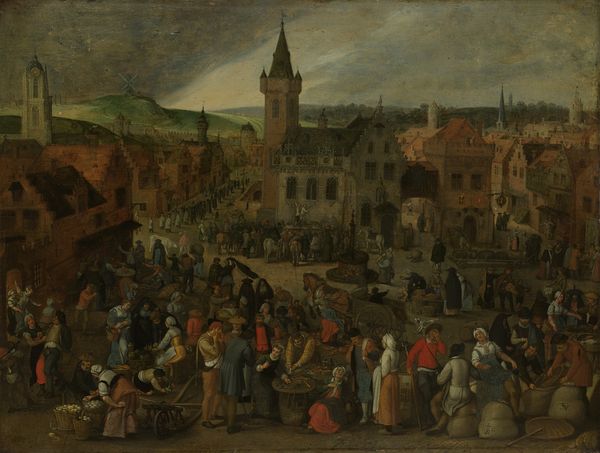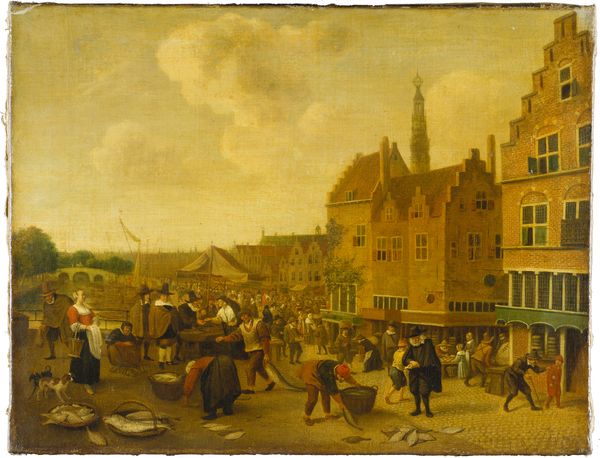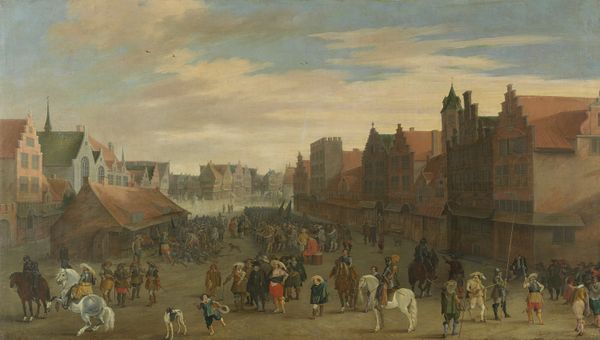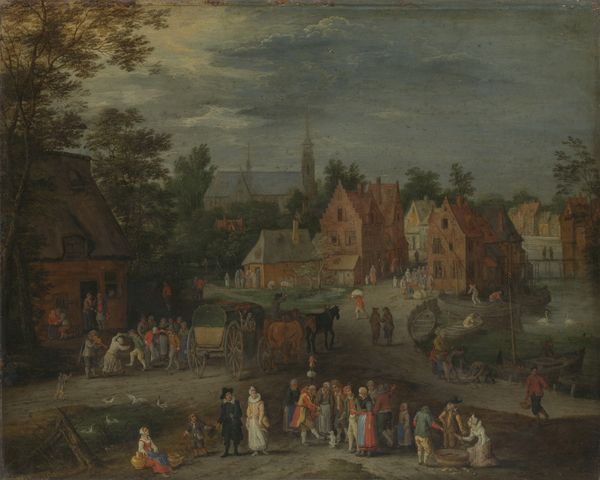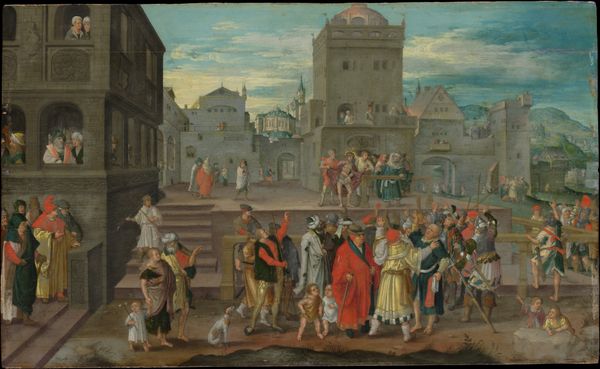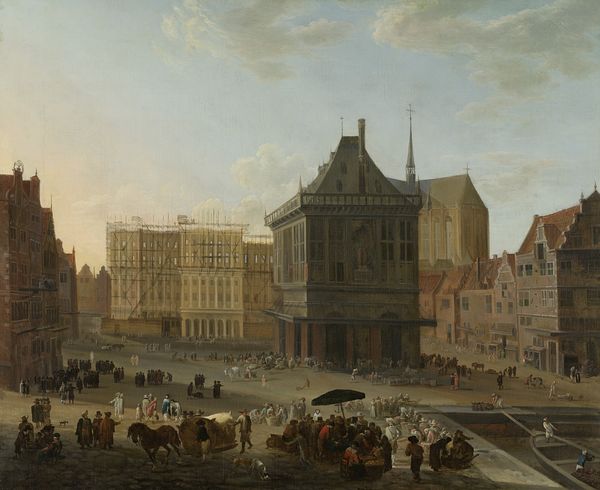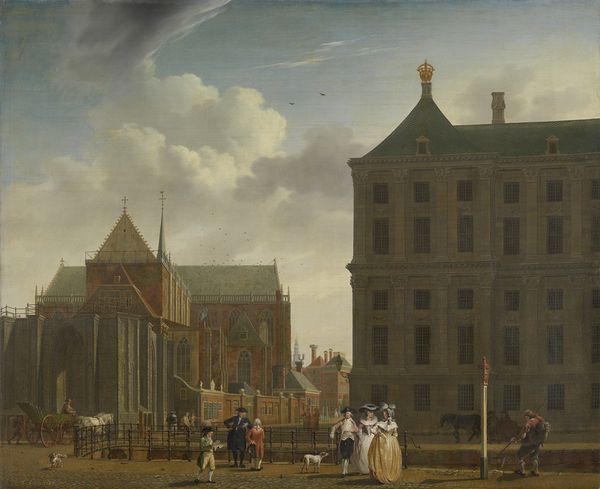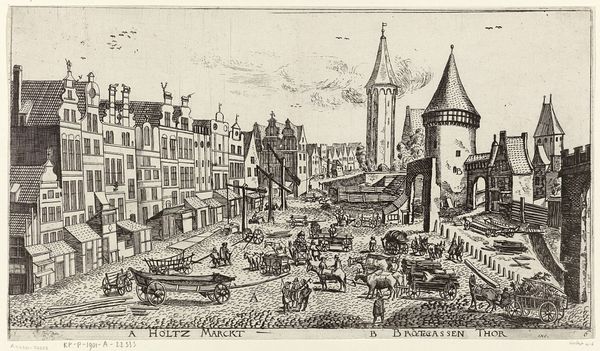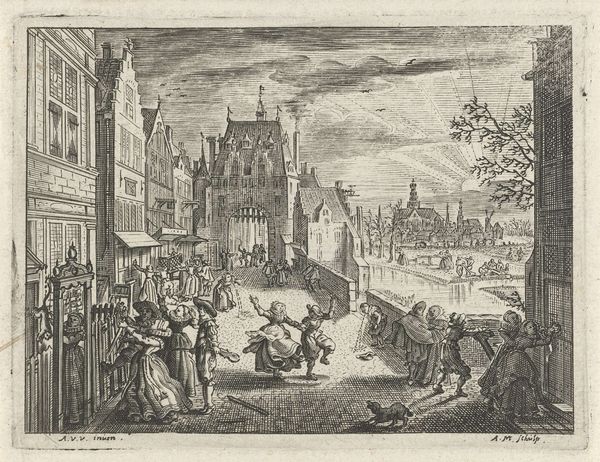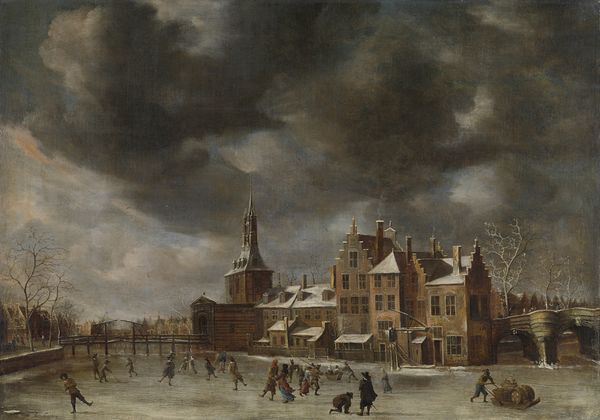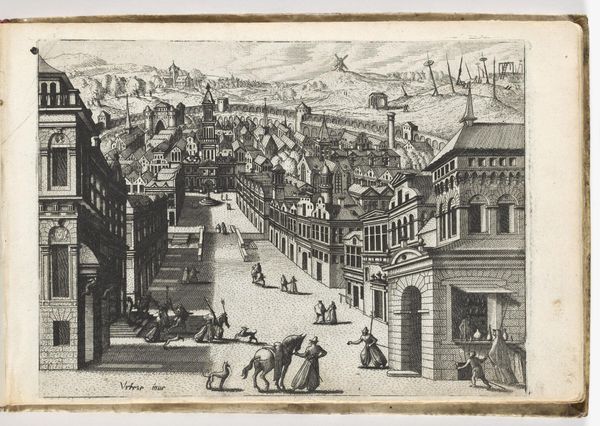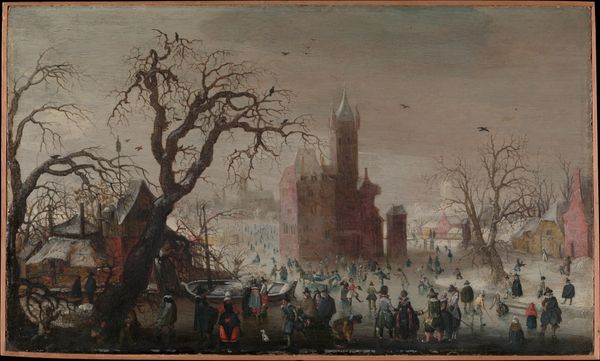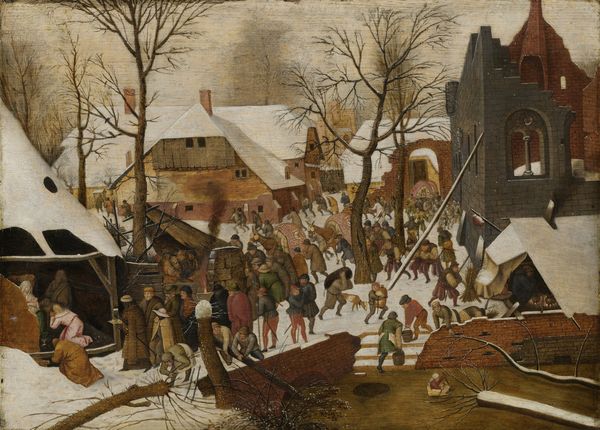
painting, oil-paint
#
baroque
#
painting
#
oil-paint
#
oil painting
#
cityscape
#
genre-painting
Dimensions: overall: 63.8 x 82.2 cm (25 1/8 x 32 3/8 in.)
Copyright: National Gallery of Art: CC0 1.0
Editor: So, this is Abel Grimmer's "The Marketplace in Bergen op Zoom," painted around 1590 to 1597, using oil paints. The scene feels so lively, almost like a stage set! So many people going about their business, all in this one very organized town square. What strikes you about this piece? Curator: What immediately catches my attention is the painting's documentation of public life within a specific socio-political context. Bergen op Zoom, during that period, held significant strategic importance. The town square was a space not just for commerce, but also for the assertion of civic identity, and social order. Note the detailed depiction of buildings – do they seem idealized to you? Editor: In a way, yes, a bit… tidy, perhaps. Everything feels very ordered. Is that deliberate, you think? Curator: Precisely! That "tidiness," as you call it, is a careful construction. Grimmer, and paintings like this, provided a visual representation of the power and prosperity the city wanted to project, both internally and externally. How does it feel different from a contemporary snapshot of a town square today? Editor: Today you might see a real mix of things…more signs of economic disparity maybe, and far less emphasis on projecting this ideal vision of civic order. The buildings also feel somewhat imposing and the painting is quite flat as a whole. It also feels very controlled in a way that contemporary photographs would probably avoid. Curator: Exactly! Considering that perspective and the somewhat flattened effect of buildings, also point toward the needs of the patron, and their desired representation, to send very intentional social signals, wouldn’t you agree? Editor: Absolutely, this controlled perspective offers insight into the public role art played at the time. I never would have thought of that angle, seeing how the scene promoted societal control! Curator: Thinking about the history that makes up these markets and cities is important to analyzing a lot of what we consider art today!
Comments
No comments
Be the first to comment and join the conversation on the ultimate creative platform.
